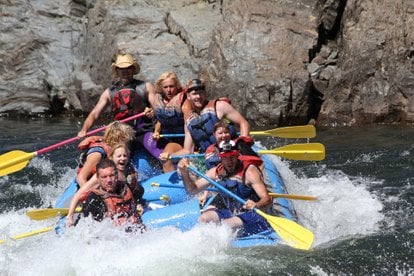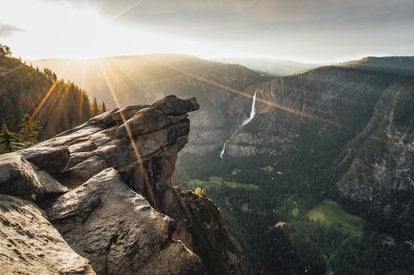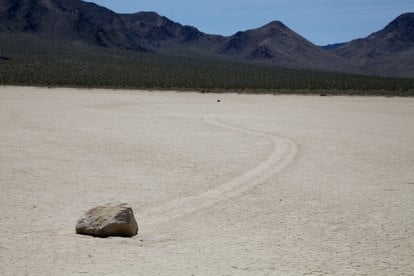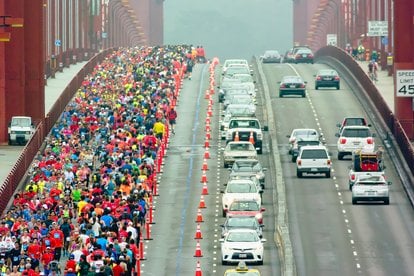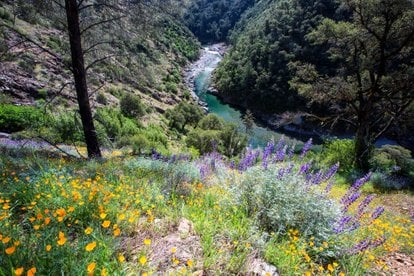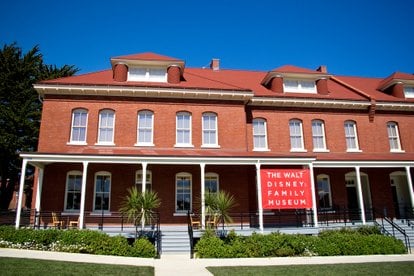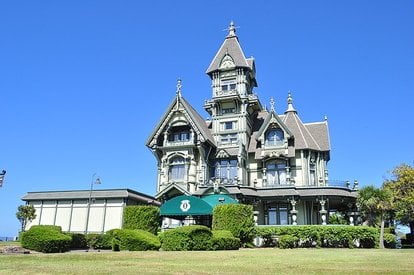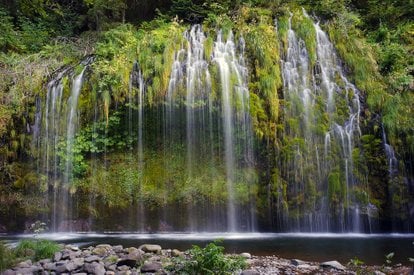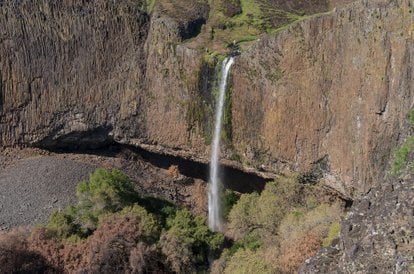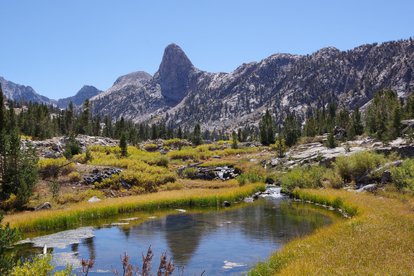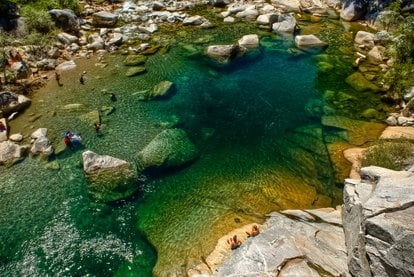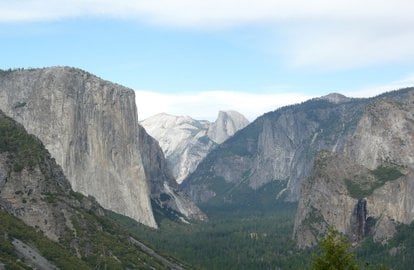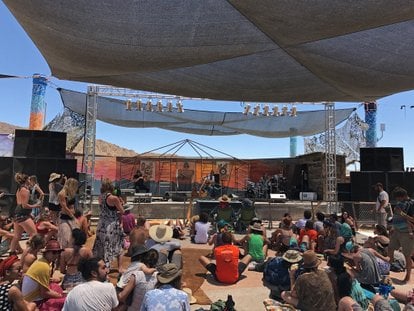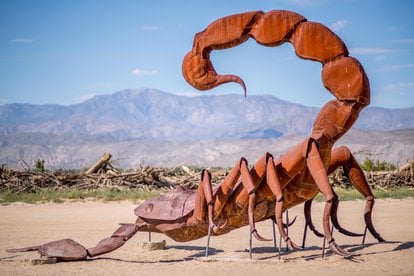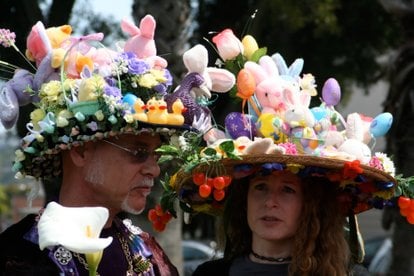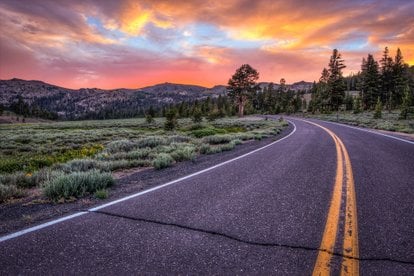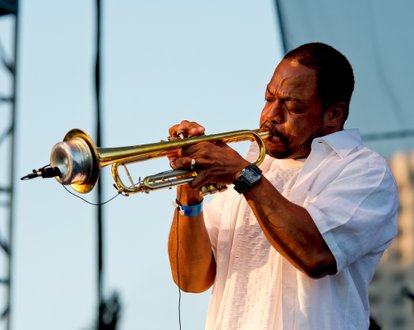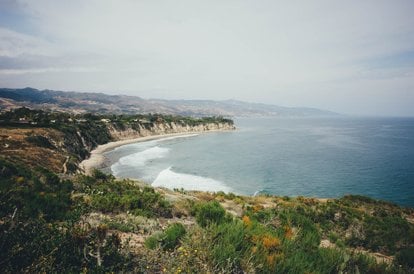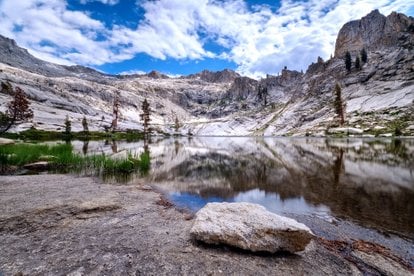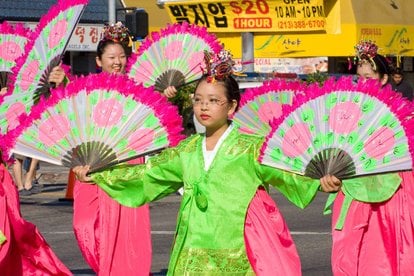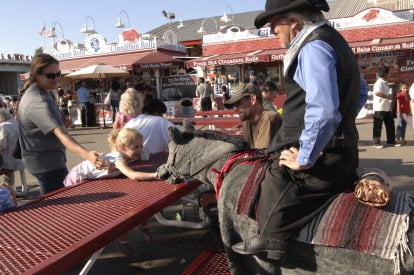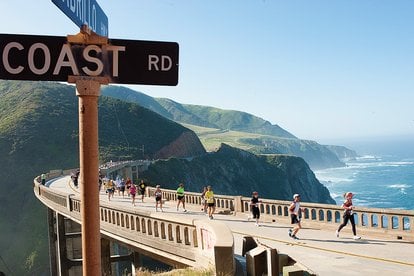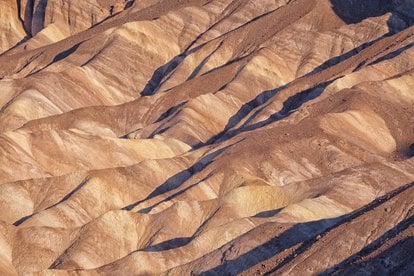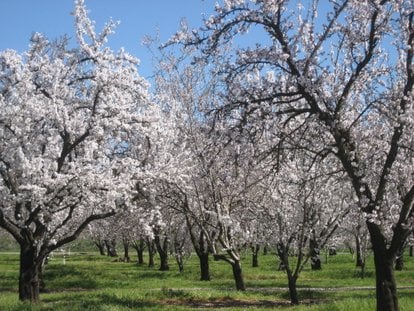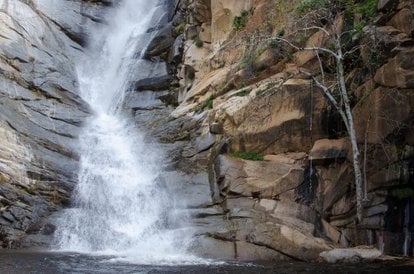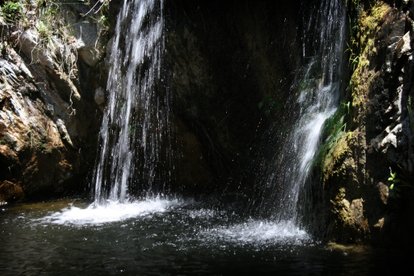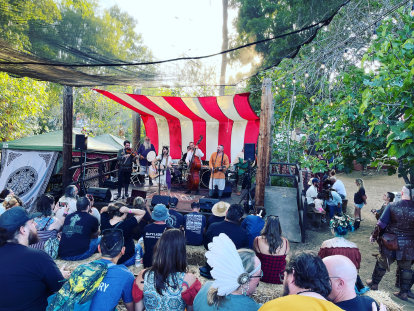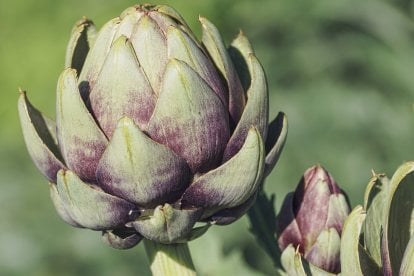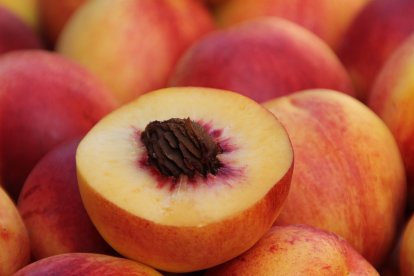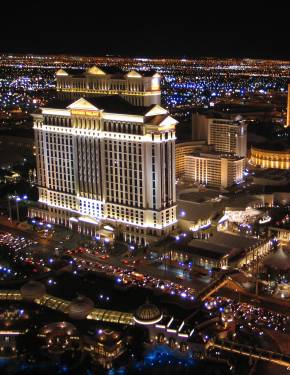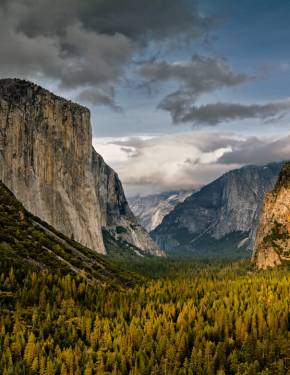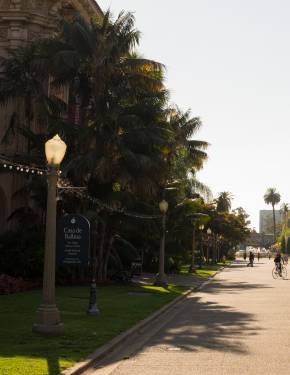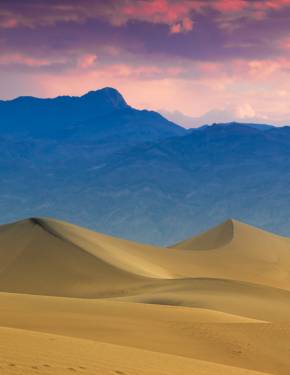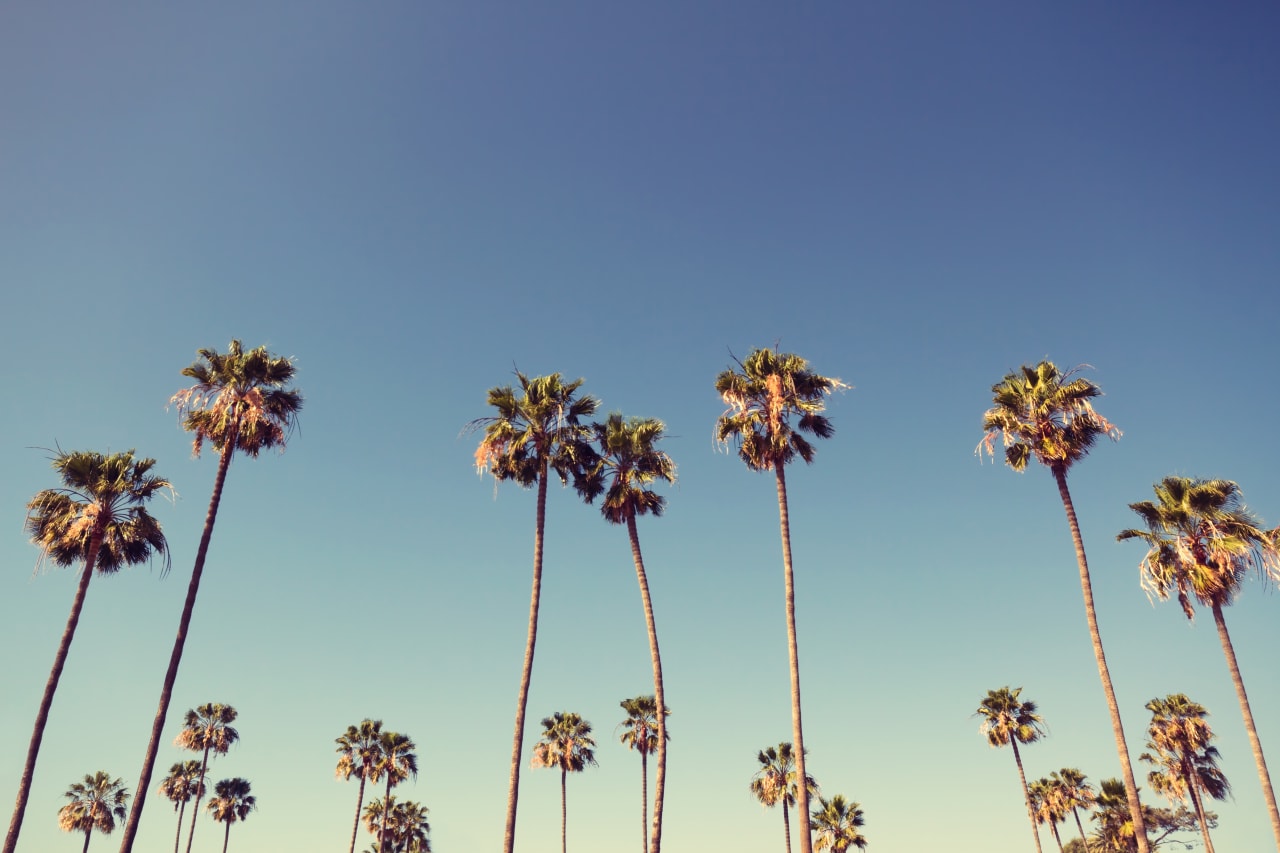
Best time to visit
290 things to do in California
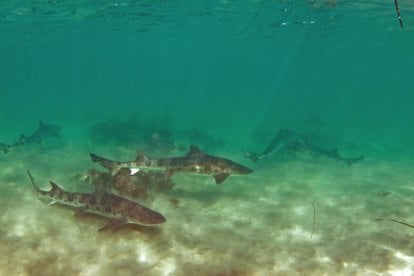
Snorkeling with Leopard Sharks at La Jolla
These species of shark are peaceful and calm creatures that love summer and enjoy warm waters
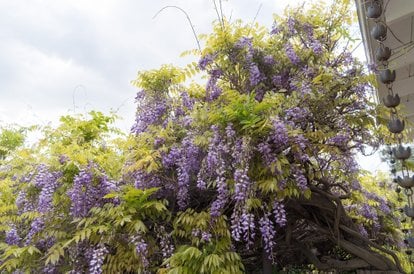
Sierra Madre Wistaria Festival
Every spring, over a million purple blossoms drape from the tangled branches, and you can visit the place only during the annual Wistaria Festival
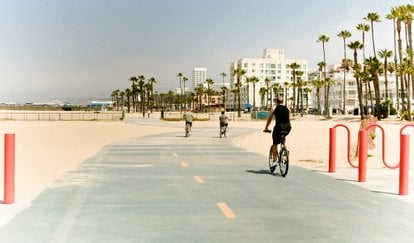
Cycling
Picturesque scenery, varied terrain, and gentle weather conditions attract cyclists to the Golden State
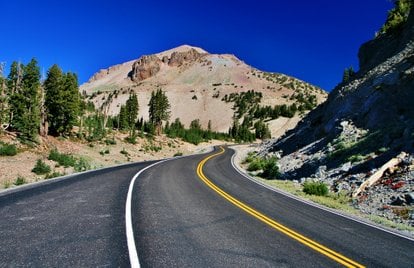
Scenic Road Trips
Driving along a large number of picturesque roads with stops near the highlights and most unique spots can be a perfect vacation plan
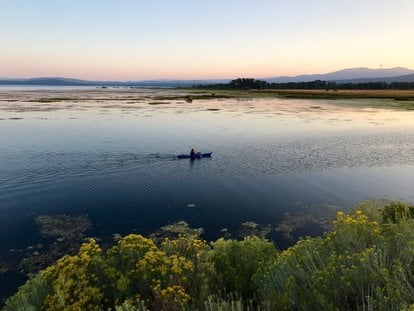
Kayaking and Canoeing
A perfect way to relax and enjoy the beauty of the surrounding nature
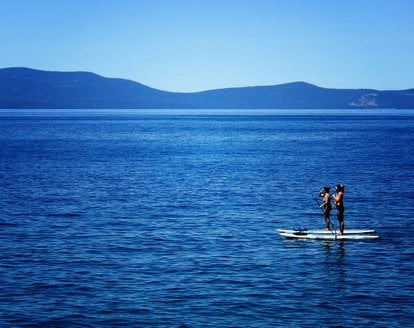
Paddleboarding (SUP)
One of the most enjoyable and fun water activities is popular all along the California coastline
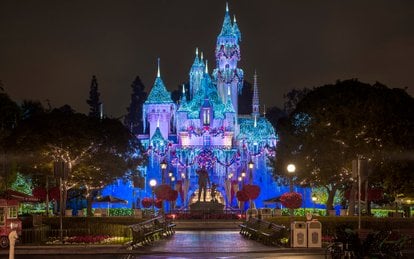
Disneyland
Try avoiding busy weekends and school holidays to enjoy shorter queues in the day full of rides and fun

AT&T Pebble Beach Pro-Am
One of the world's most popular golf events unfolds annually in Northern California, attracting top pros, amateurs, and numerous celebrities
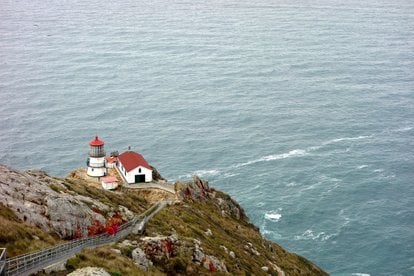
Point Reyes National Seashore
If you are looking for a stunning coastal scenery, you are on the right path
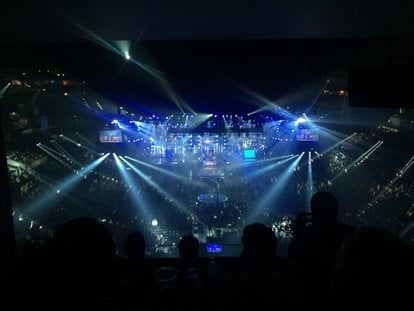
Grammy Awards
Music enthusiasts eagerly await this glamorous event, anticipating spectacular shows and performances by top singers and bands

Palm Springs International Film Festival
Meet some A-list stars and attend exciting presentations and special events followed by glamourous night parties
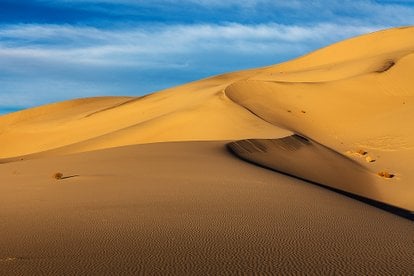
Eureka Dunes
You'd never think sand dunes can have so many unique secrets kept inside
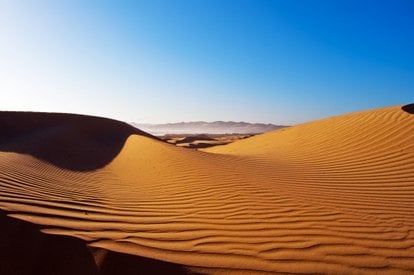
Guadalupe-Nipomo Dunes
These coastal dunes are a site of interest for several unique reasons. Find out why!
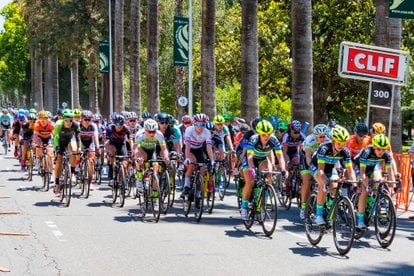
Amgen Tour of California
The world's top cyclists cover hundreds of kilometres of spectacular roads and grueling passes; you'll see fascinating sprints and dramatic finishes
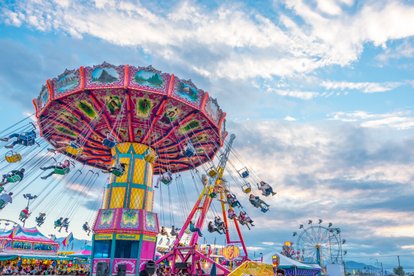
Riverside County Fair & National Date Festival
From monster trucks to camel races and stunning music performances to remarkable food, there's so much more to do at the fairground

Hoes Down Festival
A great place to celebrate the harvest season is Full Belly Farm where the fun never ends, especially for kids

Bring Your Own Big Wheel Race
Ride down one of San Francisco's steepest hills on your tricycle
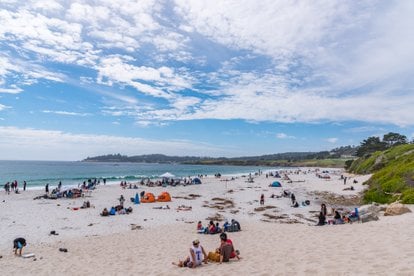
Beach Season
A huge number of varied beaches with white sands and clear waters give you the chance to choose a perfect spot within the coastline of the Golden State
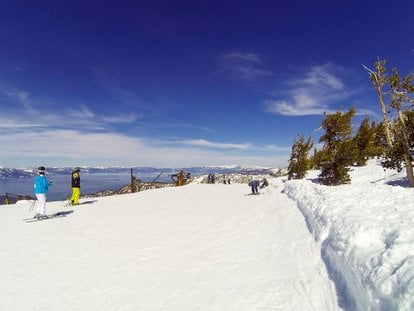
Skiing at Lake Tahoe
Magical sparkling scenery and a wide range of activities attract people to Lake Tahoe each winter
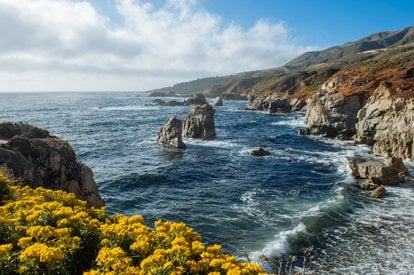
Big Sur Road Trip
Beautiful coastline, amazing forests, and gorgeous mountains—Big Sur has it all

Mount Shasta
This majestic mountain draws lots of hikers, climbers, and mystics
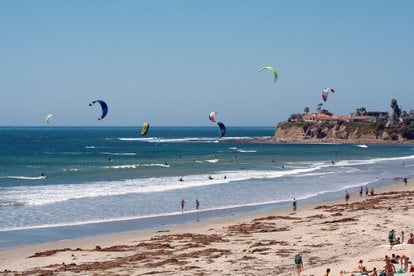
Kiteboarding
Just choose the right season and the right spot to enjoy your favourite water activity in the Sunny State
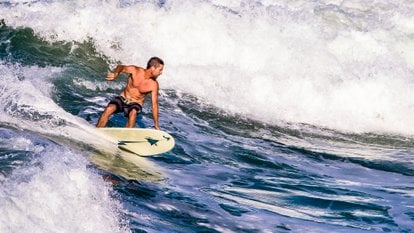
Surfing
Amazing swells, great weather conditions, and various opportunities on dozens of ideal surfing beaches are waiting for you in the Golden State
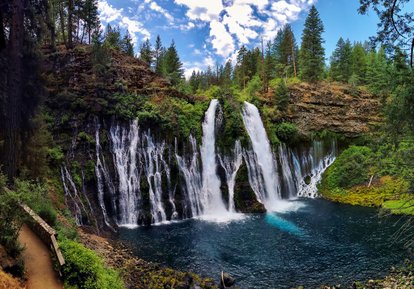
Burney Falls
Enjoy watching the beauty and hearing the roar of this jaw-dropping, massive and powerful falls

Marina del Rey Holiday Boat Parade
This spectacular boat show is a great Christmas time family event

Festival of Arts of Laguna Beach
One of the most unique art events in the world with plenty of art treasures to observe
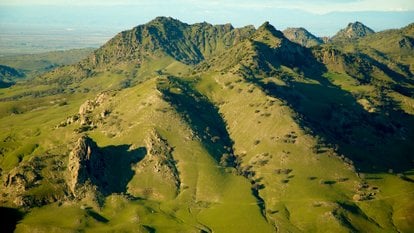
Sutter Buttes
Some enthusiasts try to reach the summit of the highest mountains in the world, but how about the smallest?
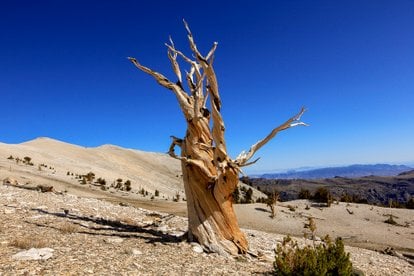
Bristlecone Pines
One of the longest living organisms on our planet can be found in the high mountainous regions of California
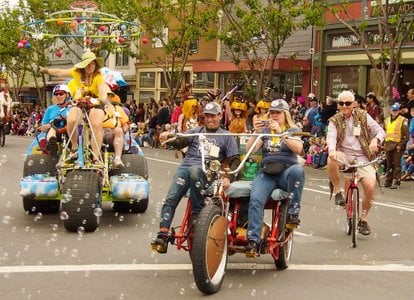
Kinetic Grand Championship
See the weirdest vehicles along the varied track or join the kinetic sculpture race and have fun

Santa Barbara International Film Festival (SBIFF)
The red carpet is rolled out, and movie stars are ready to pose in front of the cameras
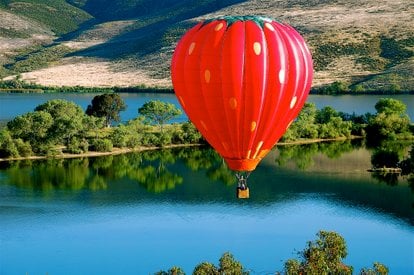
Temecula Valley Balloon & Wine Festival
This three-day event can be the most romantic escape filled with the taste of good wine, spectacular flights, and pleasant time

California State Fair
The Fair has been attracting people for over 150 years. Come and join this spectacular celebration

BottleRock Napa Valley
This music festival in Napa Valley combines amazing performances with culinary shows

Academy Awards (the Oscars)
It's always exciting to watch the ceremony online, but being a part of it and seeing all your favorite stars passing by right in front of you is a unique experience

Surf Dog Competition
Dog surfers from all over the country gather along the Imperial Beach and Huntington Beach shoreline to take part in surfing competitions and win the first prize. You should witness it in order to believe it
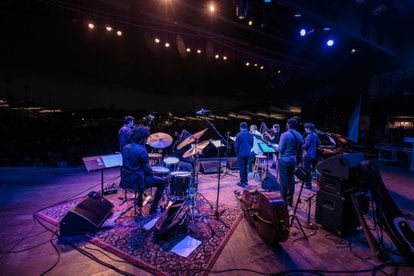
Monterey Jazz Festival
Top names of jazz gather together in one place to share their talent among real fans. Don't miss one of the greatest jazz events in the world!

Painted Dunes in Lassen Volcanic National Park
The striking colours of volcanic ash dunes are especially spectacular during glow hour

SnowGlobe Music Festival
Celebrate New Year's Eve with a cold, fresh mountain view, perfect powder, your favorite snow activities, and the world's best musicians—all in one place

BNP Paribas Open
If you are a tennis fan, this is your chance to see favorite players up close

Sea Otter Classic
Check out these fascinating racing competitions and one of the largest bike expos in the US—this event is a real celebration of cycling

Newport Beach Christmas Boat Parade of Lights
Enjoy the sight of hundreds of beautifully decorated vessels

US Open of Surfing
If you are looking for some amazing moves on waves, this event is definitely for you

Comic-Con International
If you are a true comic fan this event should be number one on your list! Step into the world of fiction, act like your favourite hero, and meet your idols
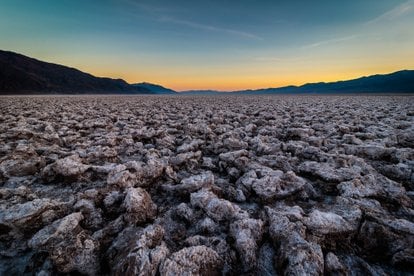
Devil’s Golf Course
The hottest place on Earth features lots of unique spots and this is one of the most bizarre places to visit
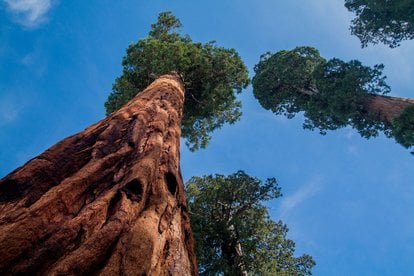
Sequoia National Park
Visit the home of giant sequoias and discover the biggest among the biggest by sheer volume

Bubblegum Alley
Art can have various forms, and the residents of San Luis Obisco have found a new one
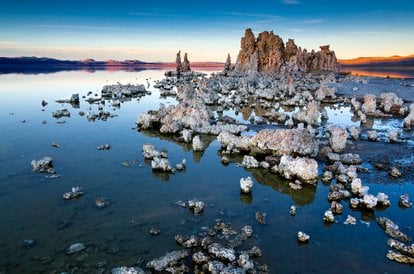
Tufa Towers of Mono Lake
Weird limestone creations that emerge from the lake surface attract naturalists and curious tourists. Are they natural, or is it another art installation?
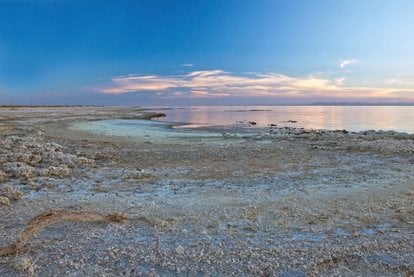
Salton Sea
Visit the largest lake in California located in the desert. The Salton Sea was created due to extreme natural forces and has been changing from year to year, and may disappear in the nearest future

Devils Postpile National Monument
These unique symmetrical columns created by the forces of nature attract people from all over the world
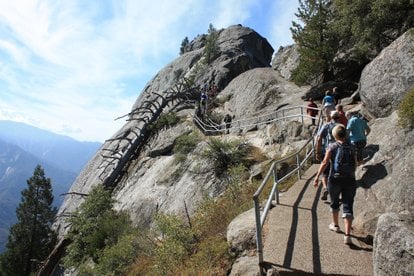
Moro Rock Hike
Take a deep breath and start one of the most beautiful hikes to the top of this bald granite rock formation with stunning views of Sequoia National Park

Forestiere Underground Gardens
This unique manmade underground world features fruit gardens and amazing stonework
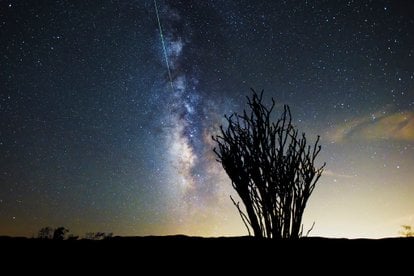
Perseid Meteor Shower
Stars begin to fall in the middle of summer—get ready to make some wishes

Bald Eagles
It is believed that the Bald Eagle symbolizes strength, courage, freedom, and immortality

San Francisco Pride
Huge and spectacular LGBT weekend with over 40 years of history
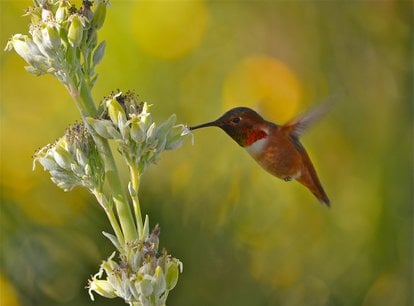
Hummingbirds
This wee zippy bird moves so fast that you'll have to try hard to take a nice picture

LA 4th of July Block Party, Events & Fireworks
Celebrate Uncle Sam at the 4th of July Block Party with live music and fireworks

The Original Renaissance Pleasure Faire
Stroll the village lanes brimming with people and handicrafts demonstrating Renaissance times

Fiesta Broadway (Cinco de Mayo)
The US largest festival of Mexican and Latin American world

Ice Skating
The absence of snow is not a reason to give up this Christmas fun—skating outdoors
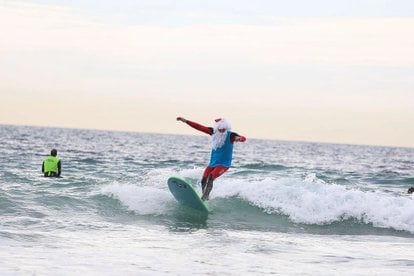
Surfing Santa Competition
Dressed like Santa, surfers raise money for people living with autism

LA Zoo Lights
Christmas nightly entertainment in the Zoo is for the whole family: thousands of garlands and Santa Claus
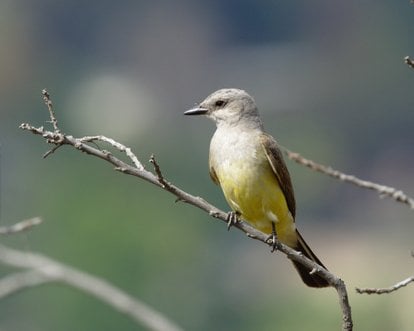
Birdwatching in Ernest E. Debs Park
This kingdom of birds is a delight to any nature fan

Diving around Santa Catalina Island
Crystal clear waters near the island of Santa Catalina with its rich underwater world are perfect for diving
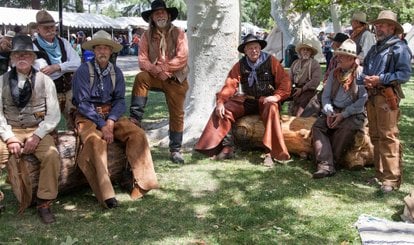
Santa Clarita Cowboy Festival
Feel some Western charm at Santa Clarita valley recreating the atmosphere of its cowboy past
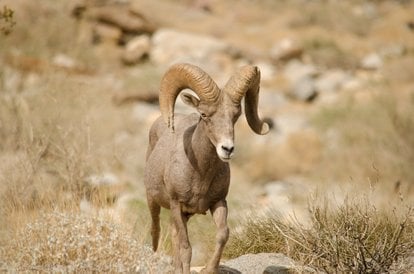
Big Horn Sheep
Large animals, dense, and stocky with low and strong limbs, live in the mountains in the vicinity of Los Angeles

Chino Hills State Park Wildflowers
Photographers spend days here trying to capture all of that fragrant tenderness with their cameras

Skiing and Snowboarding
It is possible to go skiing and surfing in Los Angeles on the same day
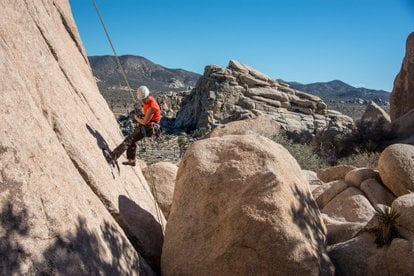
Joshua Tree Rock Climbing
This favourite place for rock climber training offers over 8,000 routes

Los Angeles Marathon
Thousands dream to participate in this prestigious marathon in Los Angeles
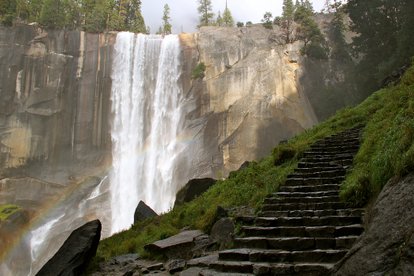
Mist Trail
One of the most spectacular, adventurous, and popular hiking trails in Yosemite draws crowds of visitors every day during the high season
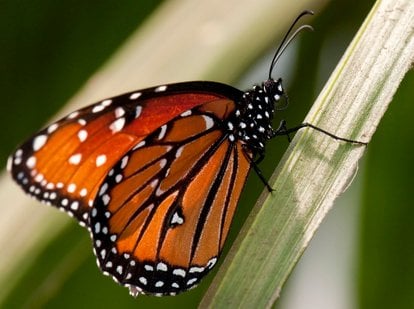
Monarch Butterflies
Tens of thousands of North American monarchs head to California for their honeymoon, and wedding night falls on Valentine's Day
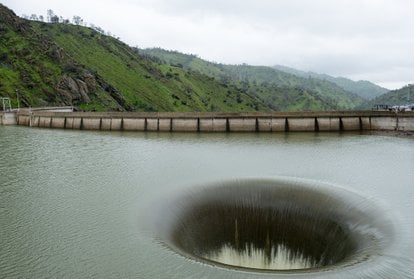
Monticello Dam Morning Glory Spillway
An enormous drain hole that resembles a portal to another world is especially impressive during the rainy season

Сlam Chowder
The finest way to warm oneself up on a chilly summer day is to eat a portion of American clam chowder
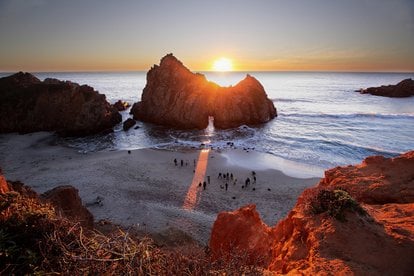
Sunset at Keyhole Arch, Pfeiffer Beach
Winter in California can reveal some real magic of light

Wine Season
Grape harvest season in SF comes along with beautiful yellow foliage and pleasant temperatures
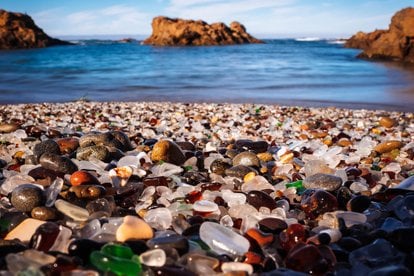
Glass Beach
Ocean is an artist able to turn rubbish into treasure—check out smooth rubies, sapphires and other jewels that used to be pieces of broken glass
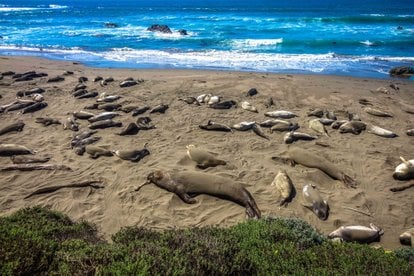
Elephant Seals
These seals with elephant noses roam the ocean searching for food, and go ashore to breed and molt
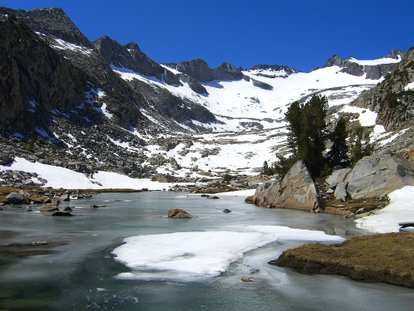
Glaciers
Yosemite Glaciers, symbols of the changing world, may disappear completely within just a few decades

Oyster Season
Oysters are consumed in San Francisco and other cities on the California's coast in accordance with “R” myth that determines the oyster season
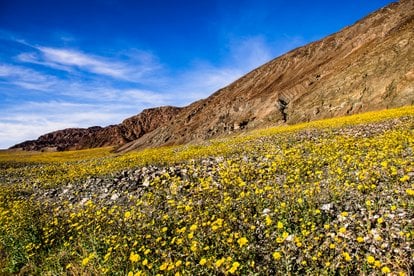
Death Valley Super Bloom
One of the driest places on the planet occasionally gets blanketed with colorful wildflowers
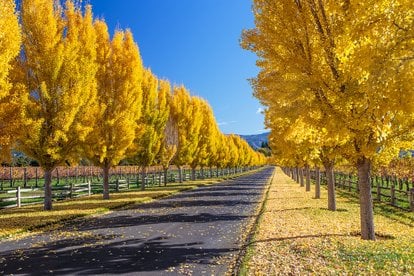
Fall Stinko Ginkgo
Yellow fruit of ancient ginkgo trees: aromatic or stinky – you are to decide
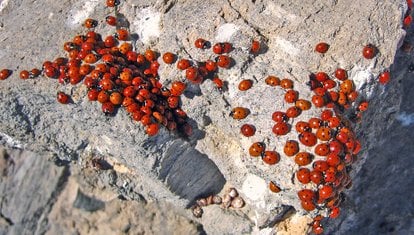
Ladybug Migration in California
Everyone loves a ladybug on their hand, but imagine hundreds of thousands! This can happen near San Francisco
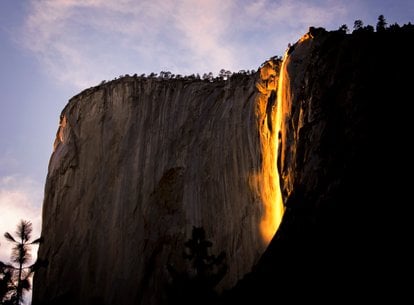
Horsetail Fall or Firefall
For just a few days each year, this waterfall is illuminated by the sun and becomes one of Yosemite’s most amazing spectacles

Cactus Pear
The spiky peel of the cactus pear covers surpeisingly tasty melon-like juicy pulp

San Francisco Fleet Week
You have never been so close to the formidable American armed forces
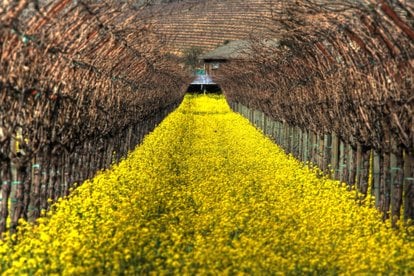
Mustard Flowers in Napa Valley
The vineyard beds explode with a vivid yellow carpet of mustard blooms creating cheerful vibes among the dull winter colors
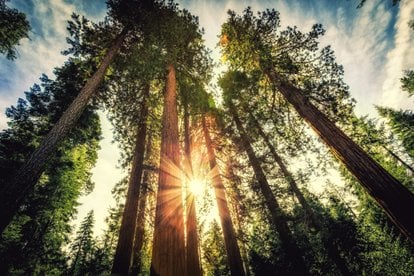
Giant Sequoias of Yosemite National Park
Feel the scale of the largest living trees on the planet

World's Ugliest Dog Contest
Beauty varies. Even the ugliest living being can make someone happy
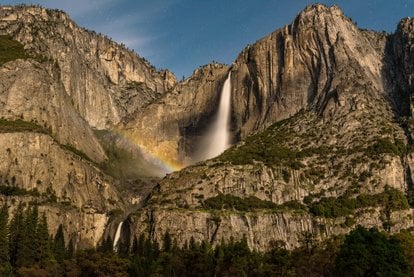
Moonbows
Waterfall droplets and the full moon create gorgeous lunar rainbow displays
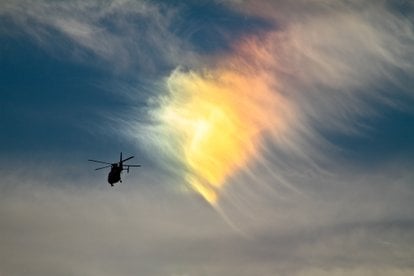
Fire Rainbows
A curious optical phenomenon occurs quite rarely and only in special locations. If you are in the right time and in the right place, just look up to the sky
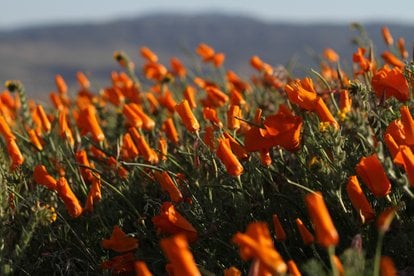
Poppy Season in the Antelope Valley
After winter rains, dry hills burst with new life as billions of technicolor orange poppies bloom

Northern California Cherry Blossom Festival
People come to Japantown to celebrate spring’s arrival and the joys of life in a Japanese way
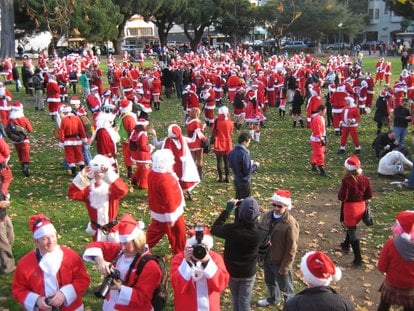
SantaCon
Streets and pubs of San Francisco are taken by joyful drunken Santas

Coachella
One of the biggest and most popular music festivals is a chance to meet all stars in one place

Super Bloom in Anza-Borrego Desert
This unusual phenomenon proves that even dry and harsh places like deserts are actually alive!

Cycling in Yosemite Valley
The absolutely best way to get around Yosemite Valley is by bike
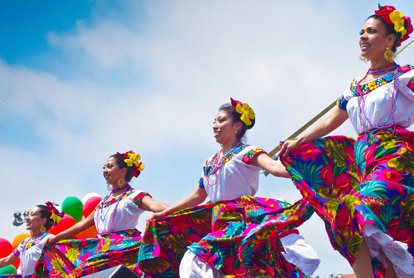
Cinco de Mayo SF
Cinco de Mayo introduces the best of Mexican culture preserved in San Francisco
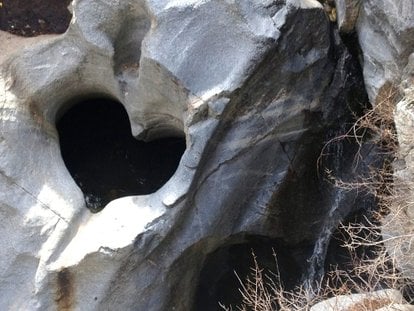
Heart Rock Falls
The power of water carved a heart in a solid stone. Such natural sites inspire and give hopes

Pacific Crest Trail
From Mexico to Canada or reverse, a crest of mountains follows along the western states of the USA, washed by the Pacific waters—it's one of the world's most scenic natural corridors
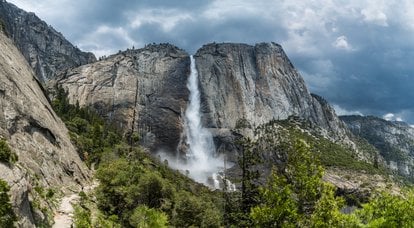
Yosemite Falls
Visit one of the world's tallest waterfalls during the spring runoff and you'll be carried away by this tremendous sight
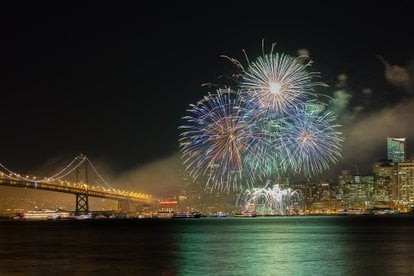
New Year’s Eve Fireworks in SF
Witness breathtaking New Year's celebration with spectacular waterfront fireworks at midnight

California Roots Festival
Discover what California’s best raggae fest can bring

San Francisco International Film Festival (SFFILM)
The longest-running film festival in America

Naples Boat Parade
One of the most beautiful holiday traditions in California

San Diego Bay Parade of Lights & Other Holiday Lights
A beautiful holiday tradition which brings the Christmas spirit to the Bay area
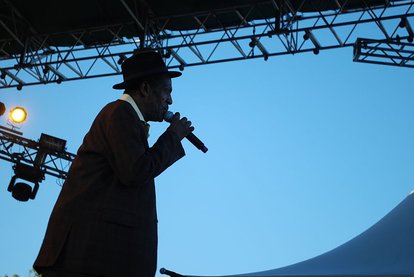
Sierra Nevada World Music Festival
Groove to the sweet vibes of roots reggae and world music
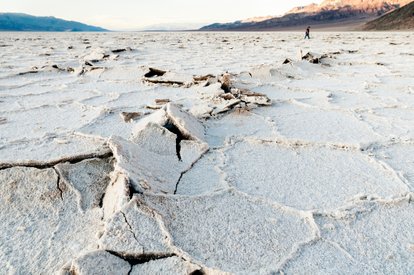
Badwater Basin
Take in the unique surroundings of the unusual spot of Death Valley National Park

Badwater 135 Ultramarathon
Examine your stamina during one of the hardest races in the world
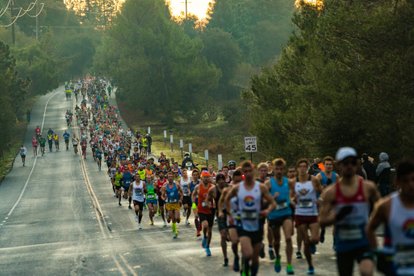
California International Marathon
With spectacular State Capitol Finish this marathon features an easy downhill course and can help you to qualify for the Boston Marathon

Alameda County Fair
A summer celebration full of carnival rides, lawn concerts, adorable animals, and funnel cakes

Gilroy Garlic Festival
A three-day celebration of garlic and other delicious foods
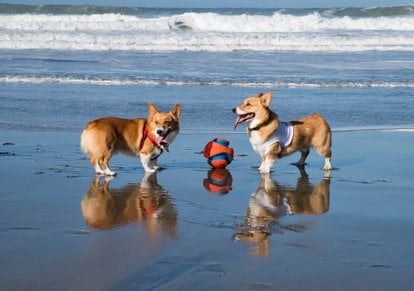
Corgi Con SF
A fun day on the beach with hundreds of cute short-legged dogs

Oakland Restaurant Week
Ten days to get the best of Oakland's restaurant scene
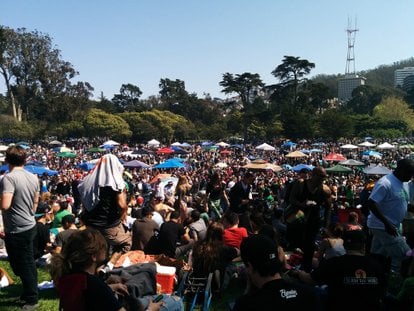
420 Hippie Hill
Every year, on April 20 or 4/20, thousands flock to Sharon Meadows to celebrate cannabis culture
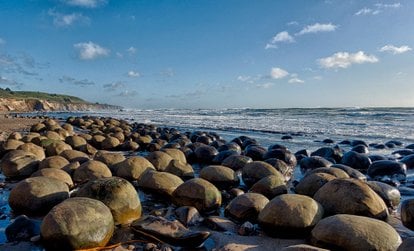
Bowling Ball Beach
Huge spherical stones lining the beach make it unique and beautiful
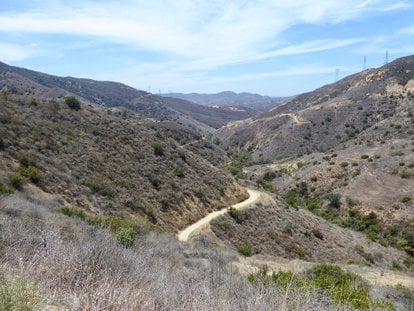
Black Star Canyon Hike
This remote canyon in the Santa Ana Mountains is popular with hikers and black magic followers
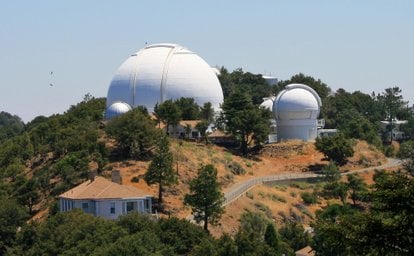
Lick Observatory
Visit the first permanent mountain top observatory in the world
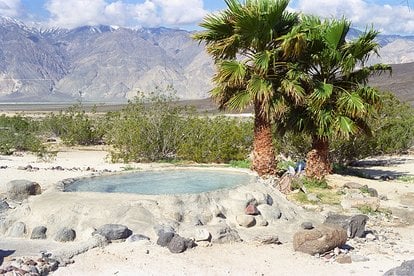
Saline Valley Hot Springs
A small desert oasis was a popular hippie hangout

Cool Patch Pumpkins Corn Maze
Kick off the holiday season and get lost in the world’s largest corn maze
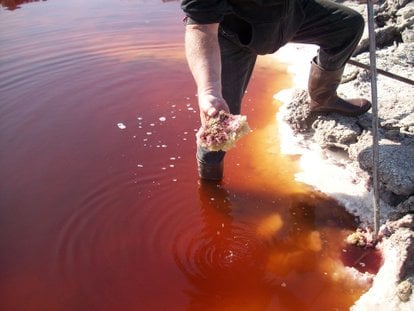
Gem-O-Rama at Searles Lake
Mid-October is the only time to experience a crystal hunt at this unique lake

Long Beach Christmas Lights
Houses around Naples Island are known to put on the best displays in Southern California

Christmas Lights
Immerse yourself in a festive Christmas atmosphere
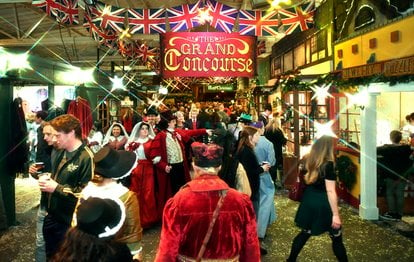
Great Dickens Christmas Fair
Go back to Victorian London at the historic Cow Palace Exhibition Halls

Los Altos Festival of Lights Parade
A popular holiday event draws spectators from all over Silicon Valley

California's Great America WinterFest
The Bay Area’s newest popular holiday tradition
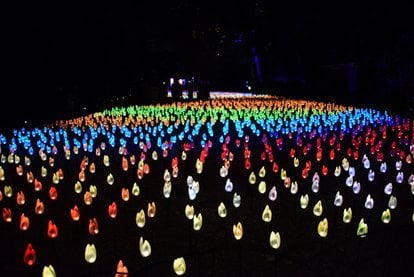
Enchanted Forest of Light
A magical light display in Los Angeles County

Huntington Harbour Boat Parade
A maritime extravaganza by the beach is one of the best in California

Palm Springs Festival of Lights Parade
A signature holiday event of Palm Springs and Coachella Valley

Winter Fest OC
Winter wonderland does exist in Southern California, you'll find it in Orange County

Bassi Falls
A beautiful and popular site in El Dorado county
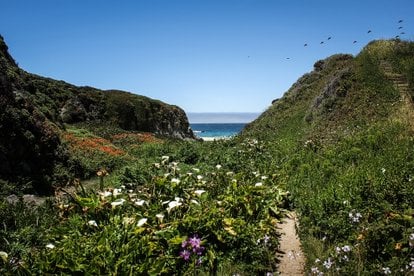
Calla Lily Valley & Garrapata Beach
One of the most picturesque coastal areas in Big Sur
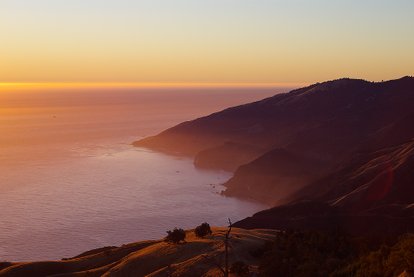
Prewitt Ridge
Watch the sea of clouds from one of the most beautiful camps in California
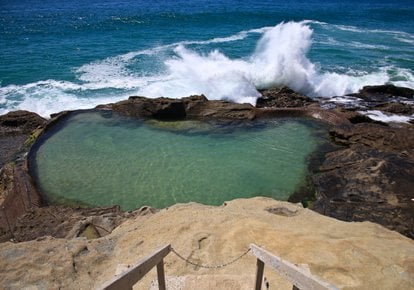
Thousand Steps Beach Pools
One of the best hidden treasures of the Orange County

Surf Ranch Pro
Unbelievable surfing in California's heartland along with beach fun, music and parties

Wasteland Weekend
Spend a few days of your life in a "Mad Max" movie setting
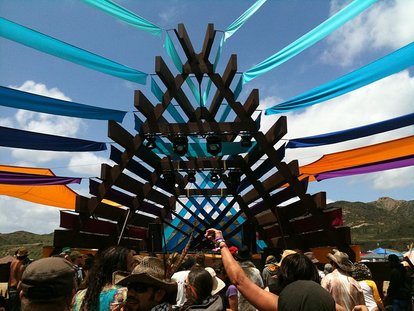
Lightning In A Bottle
Dance, party and socialize at this boutique music festival

Lassen Peak Trail
Stand atop an active volcano with the largest lava dome on Earth
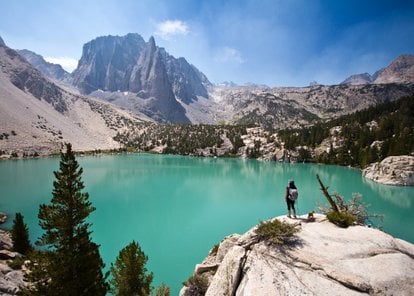
Big Pine Lakes
Seven dazzlingly beautiful lakes in a single-day hike..let's go?
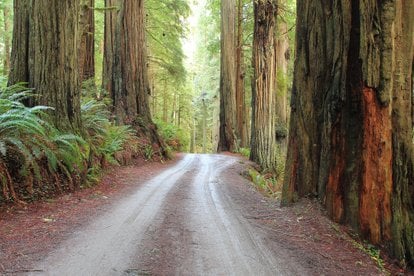
Howland Hill Road
Ride through towering old-growth redwoods of Jedediah Smith Redwoods State Park

Cherry Blossom
Delicate sakura opens the tree blooming season in the Golden State
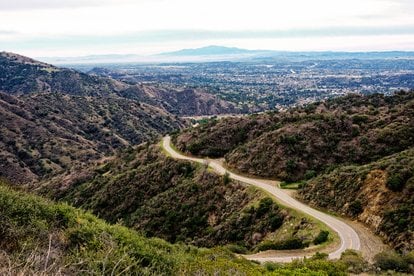
Glendora Mountain Road
Alpine scenery is just an hour away from downtown Los Angeles
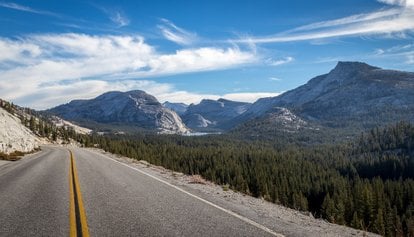
Tioga Road
The highest highway pass in California and Sierra Nevada Mountains

Angeles Crest Highway
One of the most scenic mountain drives on the West Coast

Cinco de Mayo in San Diego
One of the largest celebrations of Mexican culture north of the border
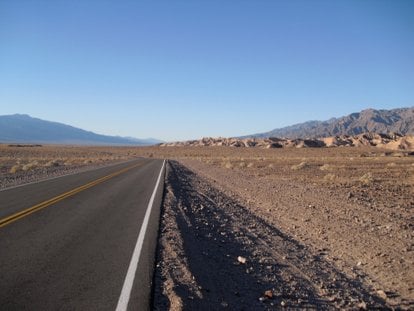
Scotty's Castle Road
The road reveals scenic landscapes of the northern part of the large national park

Napa Valley Jazz Getaway
A must-do event for a true jazz enthusiast in Yountville
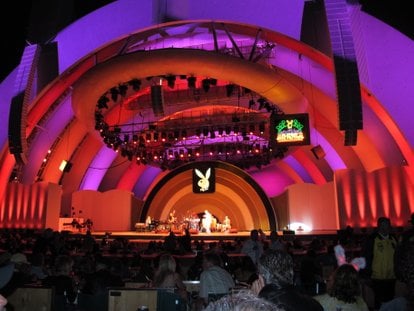
Hollywood Bowl Jazz Festival (Playboy Jazz Festival)
An all-star jazz festival held in an iconic location
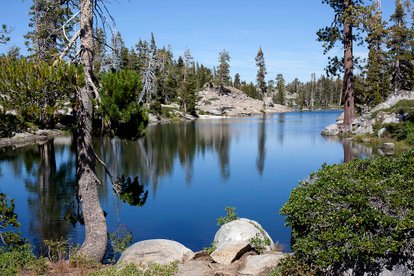
Loch Leven Lakes
A beautiful chain of lakes high in the Sierra Nevada Mountains

Lake Tahoe 4th of July Events & Fireworks
A dazzling celebration of America's independence around the scenic Lake Tahoe
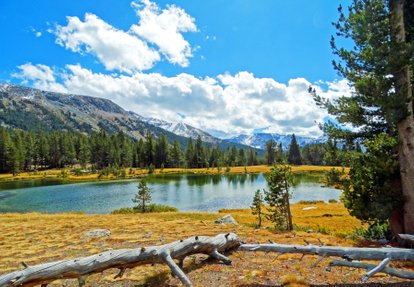
Tuolumne Meadows
One of the biggest high-elevation meadows in the Sierra Nevada Mountains
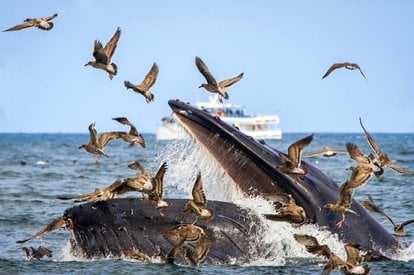
Whale Watching
From North to South, California observes the giant marine creatures migration every year
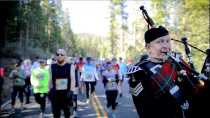
Lake Tahoe Marathon
The three-day running festival with multiple options with stunning views

Halloween Events in California
Amusement parks, scary attractions and amazing costume parties throughout the state

Napa Valley Harvest Season
Watch Napa Valley come to life with the thrill and rush of the harvest
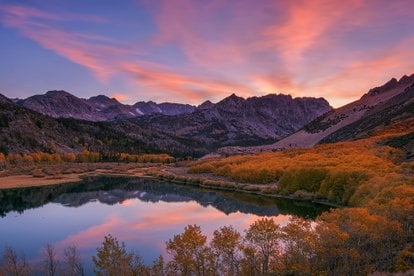
California Fall Colors
Admire bronze and amber foliage throughout the Golden State

Sacramento Christmas Lights
Witness a beautiful holiday transformation of the city when entire neighborhoods dress to impress
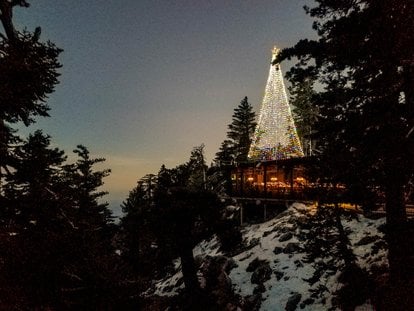
Christmas Lights and Events in Palm Springs
Winter holidays in the desert can be fun!

Lunar New Year in Sacramento
Celebrate with cultural performances, delicious food, and joyful traditions

Lunar New Year in San Jose
Learn about Asian cultures and try delicious foods during the colorful celebration

Tarantula Migration
Watch a fascinating natural phenomenon in California's parks and deserts
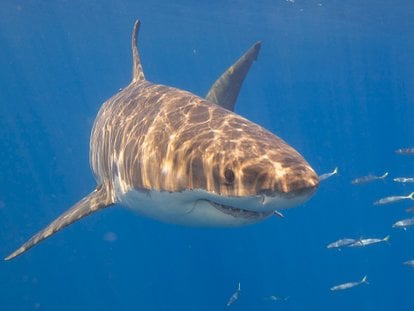
Great White Sharks
As ocean waters warm up, white sharks start their annual migration between Mexico and Southern California

Sandhill Crane Migration in California
Central Valley hosts thousands of wintering sandhill cranes

Hummingbirds
A plentitude of rare treats await the avid birdwatchers in both Southern and Northern California
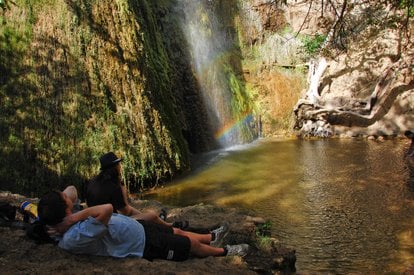
Escondido Falls
A hidden waterfall near Los Angeles is a perfect one-day getaway from the city
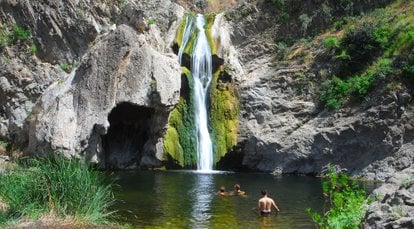
Paradise Falls
One of a few waterfalls thriving in the hot and dry climate of the Thousand Oaks area

Hermit Falls
A small waterfall in Santa Anita Canyon near Arcadia
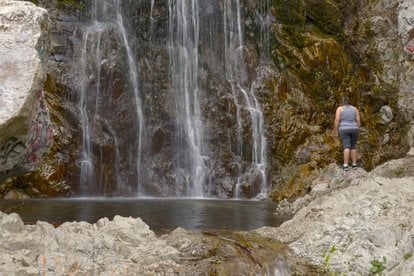
Bonita Falls
A tall waterfall in San Bernardino National Forest

Fall Colors
Autumn shows off spectacular foliage in the vineyards of California's Wine Country

Fall Colors near Los Angeles
Los Angeles has a reputation of a summer destination, but it can have an autumn vibe as well

Santa Cruz Christmas Lights
Take a ride on a holiday train or a holiday boat in festive Santa Cruz

Sonoma Hot Air Balloon Festival
Enjoy ballooning in the heart of California's Sonoma County, just an hour drive from Napa
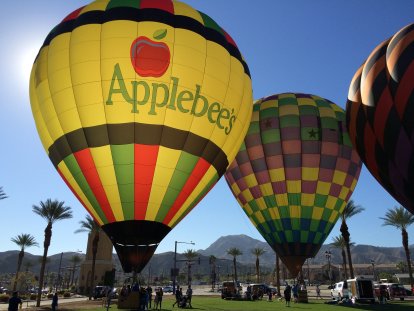
Cathedral City Hot-Air Balloon Festival
Not just balloons! A fall festival in Coachella Valley offers something for everyone
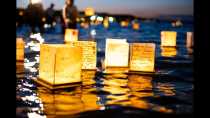
Escondido Water Lantern Festival
This unique eco-friendly event will give you a sense of magic

Wings Over Camarillo Air Show
Witness impressive flight demonstrations and aerobatics on California's Central Coast

Capital Airshow
Let the Californian sun help you relax while you enjoy this two-day extravaganza

Los Angeles Comic Con
A vibrant celebration of popular culture and diversity
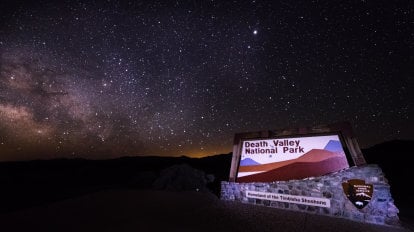
Stargazing
This is why you'll want to put stargazing in Death Valley on your bucket list

Sac Comic-Con
A full day of family-friendly entertainment for the fans of pop culture

Long Beach Comic Con
Free up your inner geek at this beautiful celebration of all things pop culture
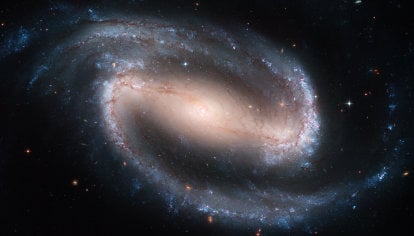
Stargazing
Don't underestimate San Diego's stargazing spots

Comic Con Revolution Ontario
The two-day family-friendly popular culture convention at Ontario Convention Center

Stargazing
If you want to escape loud city life, then stargazing in California is your thing

California Artisan Cheese Festival
A celebration of flavor and craftsmanship in Sonoma County

San Diego Beer Fest
Over 70 breweries showcase their best beers in Liberty Station
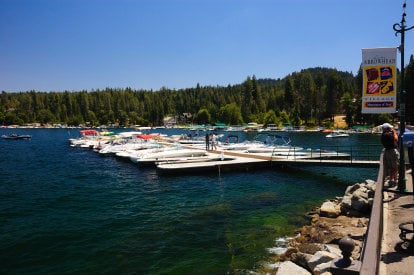
Lake Arrowhead Oktoberfest
Drink beer, hit the dance floor, and have unforgettable fun at Lake Arrowhead Oktoberfest in California

Marilyn Monroe's House
The final residence of the famous actress where she spent her last days
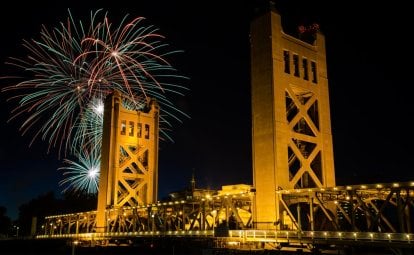
Sacramento 4th of July Parades and Fireworks
Explore the best annual events in Sacramento and its suburbs

San Jose 4th of July Events & Parade
This Independence Day celebration will make you cherish diversity

Lincoln 4th of July Parade & Events
A traditional family-friendly celebration near Sacramento

Antioch 4th of July Fireworks & Parade
Grab your camera because you will certainly want to remember this celebration

Caruthers District Fair
The largest and longest-running free-gate fair in the Golden State

Carlsbad Village Street Faire
Grab your little ones to celebrate life together at this awesome street fair

Santa Maria Valley Strawberry Festival
Fall in love with strawberries at this family-friendly event
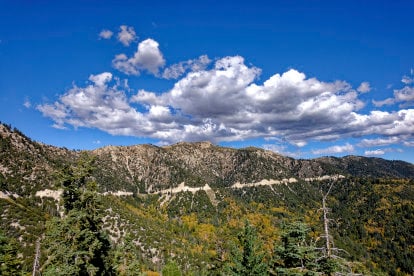
Big Bear Lake Fall Colors
Scenic fall foliage hikes in San Bernardino National Forest
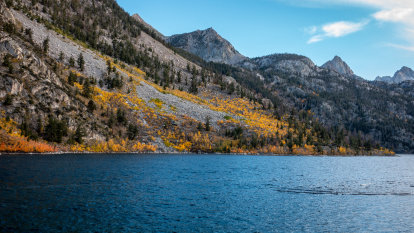
Lake Sabrina Fall Colors
Enjoy fall foliage at one of California's most mesmerizing spots

Long Beach Christmas Parade
Get away from it all at this authentic Christmas parade

Camarillo Christmas Parade
Camarillo Christmas Parade offers a great chance to celebrate winter with a family
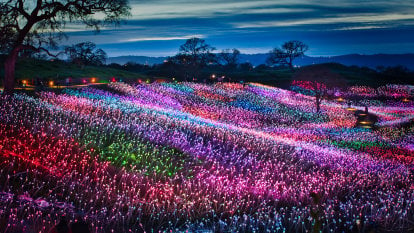
Light at Sensorio
Light at Sensorio invites you to Paso Robles to enjoy several fantastic light installations, including Field of Lights and Light Towers. You will be stunned for sure!

Solvang Christmas
This Danish-style month-long Christmas celebration welcomes you to have lots of fun
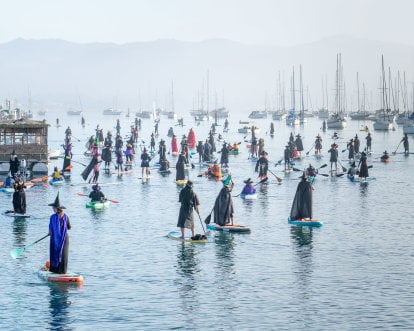
Morro Bay Witches & Warlocks Paddle
Over 500 witches celebrate Halloween paddling in Morro Bay

Patterson Apricot Fiesta
Check out a long-standing tradition of the Apricot Capital of the World
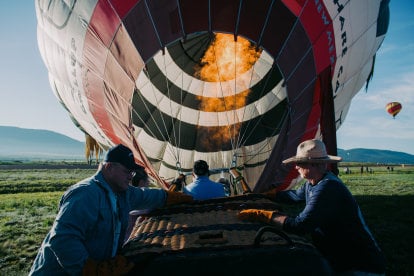
Balloons Over Angel Fire Hot-Air Balloon Festival
Save the date for this Pinterest-like hot-air balloon festival!
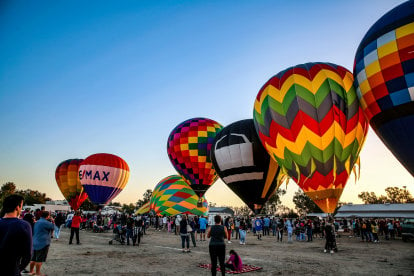
ClovisFest & Hot Air Balloon Fun Fly
An annual ballooning celebration by the Clovis Chamber of Commerce

Pacific Coast Dream Machines Show
"The Coolest Show on Earth" showcases cars, trucks, motorcycles, and aircraft

Estrella Warbirds Wings & Wheels
An annual Paso Robles show featuring aircraft and auto displays

Tulare County Renaissance Faire
Medieval entertainment and over 30 vendors in Visalia

Shasta Renaissance and Fantasy Faire
A great choice for your Memorial Day Weekend to remember!
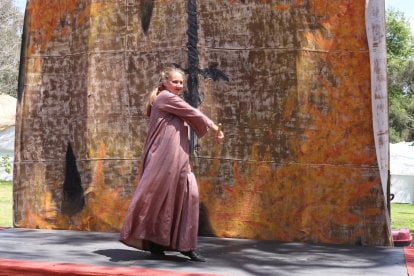
Escondido Renaissance Faire
A biannual medieval festival in southern California

Kearney Renaissance Faire
Experience a Tudor-era village, full of family-friendly fun
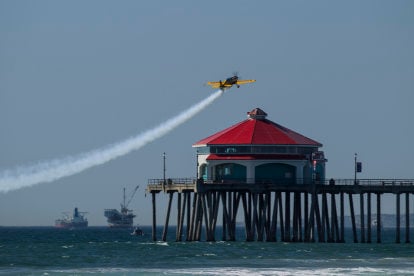
Pacific Airshow
Visit one of the USA's greatest airshows in Huntington Beach, LA

California International Airshow Salinas
A world-class, spine-chilling, and family-oriented airshow event!

Central Coast AirFest
One of the most popular annual festivals in Santa Maria

Apple Valley Airshow
Enjoy a variety of flyby demonstrations and static aircraft displays at this show

Idyllwild Renaissance Faire
Immerse yourself in a medieval fantasy nestled in the San Jacinto mountains

All Hallows Fantasy Faire
Celtic New Year’s Celebration in a historic Gold Rush area

Folsom Renaissance Faire
Travel back in time at this magnificent medieval fair

Koroneburg Renaissance Festival
Entertainment for the whole family with over 20 years of history

Subaru Newport Beach Jazz Festival
Enjoy three days of the finest jazz, R&B, and soul vibes

Northern California Renaissance Faire
The fictional village of Willingtown comes to life every fall

The Central Coast Renaissance Festival
Get a glimpse of the medieval era at this amazing Renaissance fest

Paul Bunyan Days in Fort Bragg
Deep in the heart of Fort Bragg, where the legend of Paul Bunyan comes to life
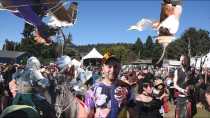
Medieval Festival of Courage
A vibrant event that harkens back to times when knights roamed the land

KVMR Celtic Festival
A fun-filled weekend fair with five musical and six demonstration stages

Healdsburg Jazz Festival
This one-of-a-kind jazz fest in California has a very special feel to it

Concord Jazz Festival
Revel in jazz tunes swirling around the amphitheater in Concord Hills and around the town's streets

Elk Grove Giant Pumpkin Festival
Seize the opportunity to spot a one-ton pumpkin and canoes carved from orange behemoths
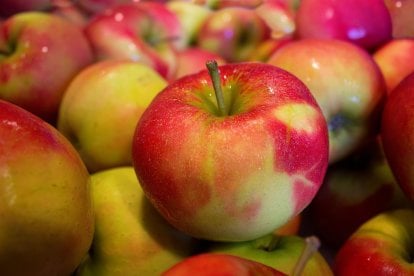
Tehachapi Apple Festival
The best party of fall season in Downtown Tehachapi

Cambria Christmas Market
Book a stay at Cambria Pines Lodge and enjoy holiday magic overnight
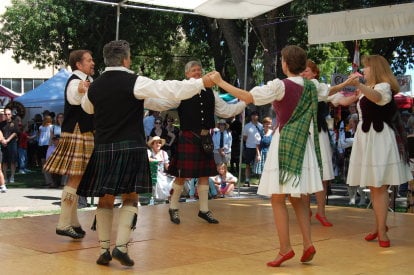
Scottish Highland Gathering and Games
Go back to the medieval times at this one-off festival!
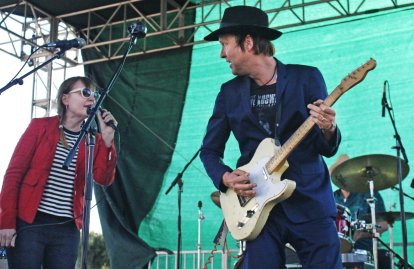
Novato Art, Wine & Music Festival
An all-weekend celebration of local music, craftsmanship, and wine in the North Bay Area

Coast Starlight Train Trip
The 35-hour Coast Starlight journey passes through astonishing views of the Cascade Range, Mount Shasta, and the Pacific Ocean shoreline

Mountain View Art & Wine Festival
An action-packed, multi-cultural celebration of art near Silicone Valley
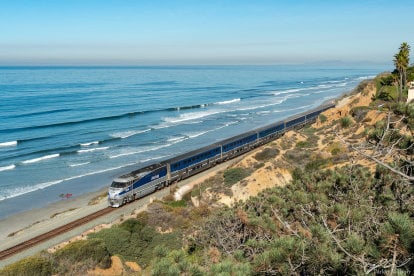
Pacific Surfliner Train Trip
A comfortable trip along the coast of California, passing vibrant beaches and surf cities.
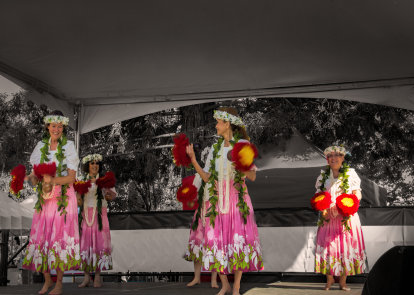
Santa Clara Art & Wine Festival
A beloved free community festival with over 160 arts & crafts booths

Newport Beach Film Festival
A first-class international film program during the 8-day festival contains over 300 feature and short films

Del Mar Wine + Food Festival
A recent exciting addition to the food fest scene in Southern California
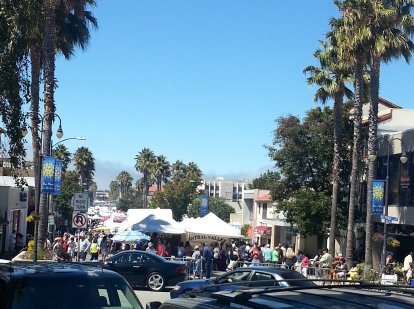
Millbrae Art & Wine Festival
An annual Labor Day weekend celebration coupled with an arts & crafts fair
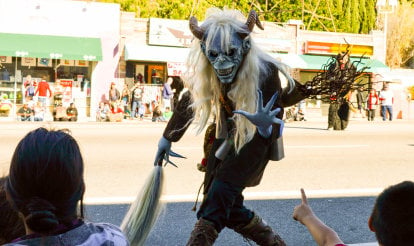
Krampus in Los Angeles
A celebration of Christmas and everyone's favorite Alpine monster

